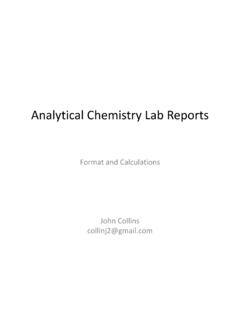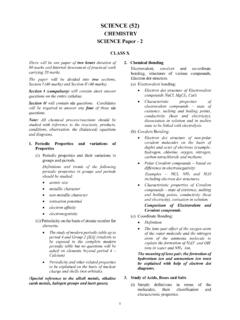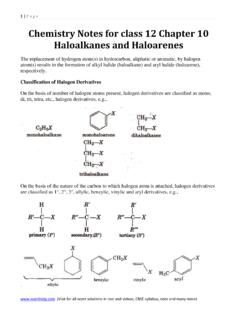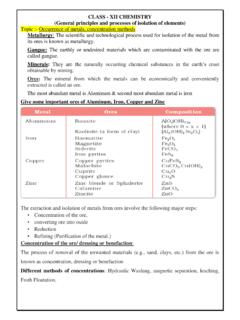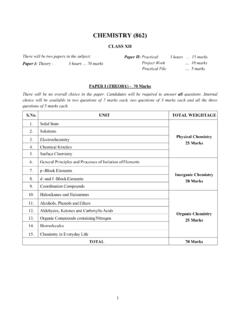Transcription of NCERT Solutions for Class 11 Chemistry Chapter 11 - The p ...
1 NCERT Solutions for Class 11 Chemistry Chapter 11. The p-Block Elements Q Discuss the pattern of variation in the oxidation states of (i) B to Tl (ii) C to Pb Ans: (i) B to Tl Group 13 elements have their electronic configuration of ns2 np1 and the oxidation state exhibited by these elements should be 3. Apart from these two electrons boron and aluminium, other elements of this group exhibit both +1 and +3 oxidation states. Boron and aluminium show oxidation state of +3 due to the inert pair effect. The two electrons, which are present in the S-shell do not participate in bonding as they are strongly attracted by the nucleus. As we move down the group, the inert pair effect becomes more prominent. Therefore, Ga (+1) is unstable and TI (+1) is very stable On moving down the group, the stability of the +3 oxidation state gets decreased.
2 (ii) C to Pb The electronic configuration of group 14 elements is ns2 np2. Hence, the most common oxidation state exhibited by them should be +4. Upon moving down the group, the +2 oxidation state becomes increasingly common and the relatively higher oxidation states become less stable. This is because of the inert pair effect. Si and C mostly exhibit the +4 state. Although Sn, Ge and Pb show the +4 and +2. states, the stability of higher oxidation states decrease while moving down the group. NCERT Solutions for Class 11 Chemistry Chapter 11. The p-Block Elements Q How can you explain the higher stability of BCl3 as compared to TlCl3? Ans: Thallium and boron belong to group 13 of the periodic table and +1 oxidation state becomes more stable as we move down the group. Boron is more stable than thallium because +3 state of thallium is highly oxidizing and it reverts back to a more stable +1 state.
3 Q Why does boron trifluoride behave as a Lewis acid? Ans: The electronic configuration of boron is ns2 np1. It contains 3 electrons in its valence shell. Thus, it can form only 3 covalent bonds which mean that there are only 6 electrons around boron and its octet remains incomplete. When 1of the boron's atom combines with 3 fluorine atoms, its octet (8) remains incomplete. Therefore, boron trifluoride remains electron-deficient and acts as Lewis acid. NCERT Solutions for Class 11 Chemistry Chapter 11. The p-Block Elements Q Consider the compounds, BCl3 and CCl4. How will they behave with water? Justify. Q Is boric acid a protic acid? Explain. Ans: Boric acid is a weak monobasic acid which behaves as a Lewis acid. So, it is not a protic acid. It behaves as a Lewis acid by accepting an electron pair from the OH ion.
4 Q Explain what happens when boric acid is heated NCERT Solutions for Class 11 Chemistry Chapter 11. The p-Block Elements Ans: Upon heating orthoboric acid at a temperature of 370 K or above, it is converted into metaboric acid and, upon further heating, yields boric oxide (B2O3). Q Describe the shapes of BF3 and BH4 . Assign the hybridisation of boron in these species Ans: (i) BF3. Boron tends to form monomeric covalent halides because of its small size and high electronegativity. These halides of boron usually have a planar triangular geometry, which can be explained by the overlap of three sp2 hybridized orbitals of boron with the sp orbitals of 3 halogen atoms. It can be noted that boron is sp2 hybridized in BF3. (ii) BH4 . BH4 has a tetrahedral structure which is accounted for by the sp3 hybridized orbitals.
5 Q Write reactions to justify amphoteric nature of aluminium NCERT Solutions for Class 11 Chemistry Chapter 11. The p-Block Elements Q What are electron deficient compounds? Are BCl3 and SiCl4 electron deficient species? Explain. Ans: Electron-deficient compounds are chemical compounds with incomplete octets that tend to acquire 1 or more electrons to complete their octet configurations. BCl3. BCl3 is a good example of an electron-deficient compound. Since boron has three valence electrons, it forms 3 single bonds with chlorine, giving the boron atom a total of 6 electrons in the outermost shell. However, it is still short of 2 electrons to complete its octet. SiCl4. Silicon has 4 valence electrons (its electronic configuration is 2s2 2p2). Its octet is completed after forming four single bonds with four different chlorine atoms.
6 Therefore, SiCl4 is not an electron-deficient compound. NCERT Solutions for Class 11 Chemistry Chapter 11. The p-Block Elements There are only 2 resonating structures for the bicarbonate ion. NCERT Solutions for Class 11 Chemistry Chapter 11. The p-Block Elements Q Explain the difference in properties of diamond and graphite on the basis of their structures. NCERT Solutions for Class 11 Chemistry Chapter 11. The p-Block Elements NCERT Solutions for Class 11 Chemistry Chapter 11. The p-Block Elements Q If B Cl bond has a dipole moment, explain why BCl3 molecule has zero dipole moment. Ans: The B Cl bond is naturally polar because of the difference in the electronegativities of Cl and B. Yet the molecule of BCl3 is non-polar. That is because the shape of BCl3 is trigonal planar. The molecule is asymmetrical.
7 So the respective B Cl bond dipole moments cancel each other, creating a zero dipole moment. Q Aluminium trifluoride is insoluble in anhydrous HF but dissolves when NaF is added. It precipitates out of the resulting solution when gaseous BF3(boron trifluoride) is bubbled through. Give reasons. NCERT Solutions for Class 11 Chemistry Chapter 11. The p-Block Elements Q : Suggest a reason as to why CO is poisonous. Ans: Given its ability to form a complex with haemoglobin, carbon monoxide is highly poisonous. The former impedes binding with oxygen by Hb. Consequently, a person dies due to suffocation on not receiving oxygen. The complex CO Hb is more stable than the complex O2 Hb. The CO Hb complex is found to be roughly 300 times more stable than the O2 Hb complex. Q How is the excessive content of CO2 responsible for global warming?
8 Ans: Carbon dioxide is a gas that is necessary for our survival. The increased CO2 content in the environment, however, poses a serious threat. An increase in fossil fuel combustion, calcareous decomposition, and a decrease in the number of trees has resulted in higher carbon dioxide levels. Carbon dioxide has the property of trapping the heat that sun rays provide. The higher the carbon dioxide level, the greater the amount of heat that is trapped. This leads to an increase in atmospheric temperature which causes global warming. Q Explain the structures of diborane and boric acid. NCERT Solutions for Class 11 Chemistry Chapter 11. The p-Block Elements NCERT Solutions for Class 11 Chemistry Chapter 11. The p-Block Elements Q Explain the following reactions (a) Silicon is heated with methyl chloride at high temperature in the presence of copper.
9 (b) Silicon dioxide is treated with hydrogen fluoride;. (c) CO is heated with ZnO;. NCERT Solutions for Class 11 Chemistry Chapter 11. The p-Block Elements (d) Hydrated alumina is treated with aqueous NaOH solution. NCERT Solutions for Class 11 Chemistry Chapter 11. The p-Block Elements Q Give reasons: (i) can be transported in an aluminium container. (ii)A mixture of dilute NaOH and aluminium pieces is used to open drain. (iii) Graphite is used as the lubricant. (iv) Diamond is used as an abrasive (v) Aluminium alloys are used to make aircraft body. (vi) Aluminium utensils should not be kept in water overnight. (vii) Aluminium wire is used to make transmission cables. NCERT Solutions for Class 11 Chemistry Chapter 11. The p-Block Elements Q Explain why is there a phenomenal decrease in ionization enthalpy from carbon to silicon?
10 Ans: Carbon ionizing enthalpy (the first element in group 14) is very high (1086 kJ / mol). That is expected because of its small size. However, there is a sharp decrease in enthalpy (786 kJ) when moving down the group to silicon. This is due to a considerable increase in the atomic sizes of elements when the group is moving down. Q How would you explain the lower atomic radius of Ga as compared to Al? Ans: Atomic radius (in pm). Aluminium 143. Gallium 135. Although Ga has more than one shell than Al, it is smaller in size than Al. This is because the 3d- electrons have poor shielding effect. The shielding effect of d-electrons is very poor, and the effective nuclear charge experienced in gallium by the valence electrons is far more than in Al. Q What are allotropes? Sketch the structure of two allotropes of carbon namely diamond and graphite.
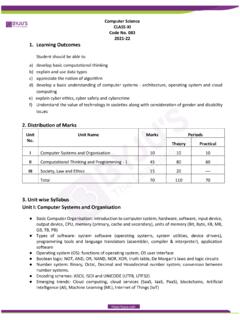


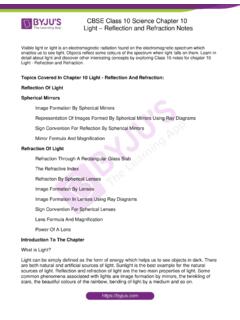

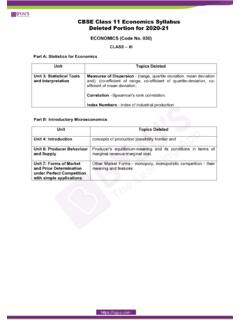

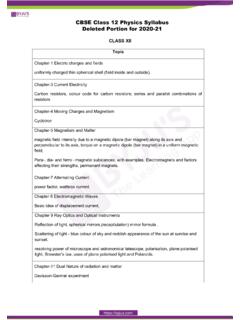


![[CLASS XII CHEMISTRY PRACTICALS] - Saint John's Senior ...](/cache/preview/8/e/c/c/7/0/2/b/thumb-8ecc702b441a6099d9810dbf9f2c3c2f.jpg)

